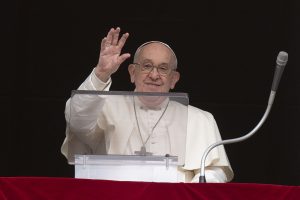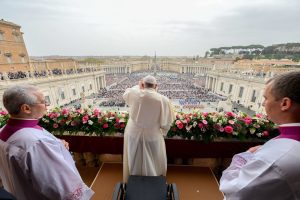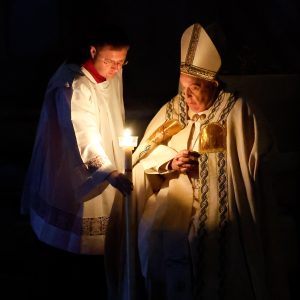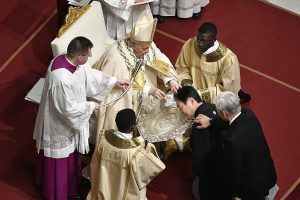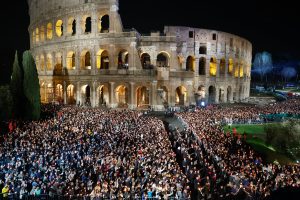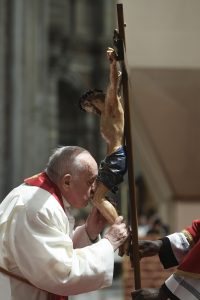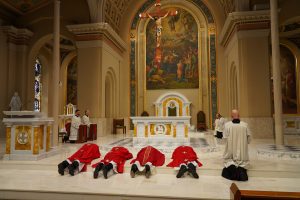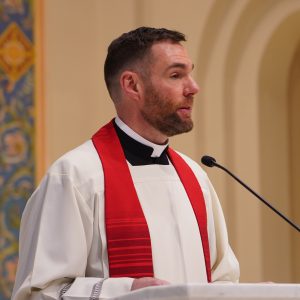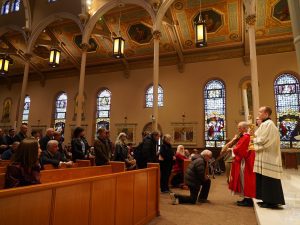WASHINGTON (OSV News) – Multiple states will have measures to expand access to abortion on their ballots in November, a key challenge for pro-life groups in the fall after their losses on similar contests in post-Dobbs elections.
The Florida Supreme Court on April 1 simultaneously ruled that the state’s Constitution does not protect abortion access and allowed a proposed amendment seeking to do so to qualify for the state’s November ballot.
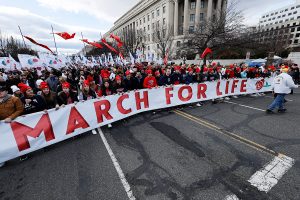
Kelsey Pritchard, state public affairs director for Susan B. Anthony Pro-Life America, told OSV News in an interview that while her group celebrates that the Florida Supreme Court upheld abortion restrictions in that state, “at the same time, we recognize that Florida is in real jeopardy of losing those protections through the ballot measure that they also upheld and said would be on the ballot in November.”
“And we really call on Gov. Ron DeSantis, on people in Florida who are pro-life and GOP leaders there to step up, and especially for the governor because he signed both of those bills into law and he needs to be at the forefront of protecting Florida from big abortion’s agenda,” she added in reference to laws limiting abortion signed by DeSantis, a Republican who unsuccessfully sought his party’s nomination for president in 2024.
Maryland and New York also will have efforts to enshrine abortion protections in their state constitutions on the ballot, while efforts for similar amendments to qualify for the ballot are still underway in several states including Arizona and Montana, where closely watched races for the U.S. Senate also will take place.
Ballot measures on abortion proved elusive for the pro-life movement in 2022 and 2023, despite achieving their long-held goal of reversing Roe v. Wade when the U.S. Supreme Court issued its Dobbs v. Jackson Women’s Health decision, which overturned the 1973 Roe decision and related precedent establishing abortion as a constitutional right, as well as the passage of legislation limiting the procedure in several states as well as new revenue streams of support in some states for women and families facing unplanned pregnancies.
Ohio voters on Nov. 7, 2023, approved a measure to codify abortion access in the state’s constitution, legalizing abortion up to the point of fetal viability — the gestational point at which a baby may be capable of living outside the uterus — and beyond, if a physician decided an abortion was necessary for the sake of the mother’s life or health. The Ohio results were not an outlier, as they followed losses for the pro-life movement when voters in California, Kentucky, Michigan, Montana, Vermont and Kansas either rejected new limitations on abortion or expanded legal protections for it.
Pritchard said, “In addition to Florida, we are involved with Arizona, Arkansas, Missouri, Montana, Nebraska, and South Dakota,” other states where advocates of expanding abortion access also are seeking the requisite number of signatures to qualify for similar ballot measures to amend those states’ constitutions.
Some Democratic strategists have argued those measures could help their efforts in battleground states, as voters even in Republican-leaning states have adopted them.
Asked how the group plans to shift its strategy on abortion ballot measures in the next election cycle, Pritchard said, “What has to be different this time is the level of engagement from GOP leaders, they have to be willing to get into these fights now, and help by raising money and vocally standing in opposition and to really unveil what these measures actually do.”
Pritchard added that opponents of such constitutional amendments need “to expose that the abortion industry is lying in their ads when they say that, if you don’t pass this constitutional amendment women are going to die in your state.”
“That’s a complete lie, because it’s just an obvious truth that every state has a life of the mother provision,” she said.
Although supporters of state-level abortion restrictions note each of those laws passed in the wake of Dobbs contains an exception for circumstances where a pregnancy presents a risk to a woman’s life, critics have pointed to cases where women alleged that the laws in their states forced them to continue pregnancies despite grave risks to their health.
The Catholic Church teaches that all human life is sacred and must be respected from conception to natural death. As such, the church opposes direct abortion as an act of violence that takes the life of the unborn child.
After the Dobbs decision, church officials in the U.S. have reiterated the church’s concern for both mother and child, as well as about social issues that push women toward having an abortion.

